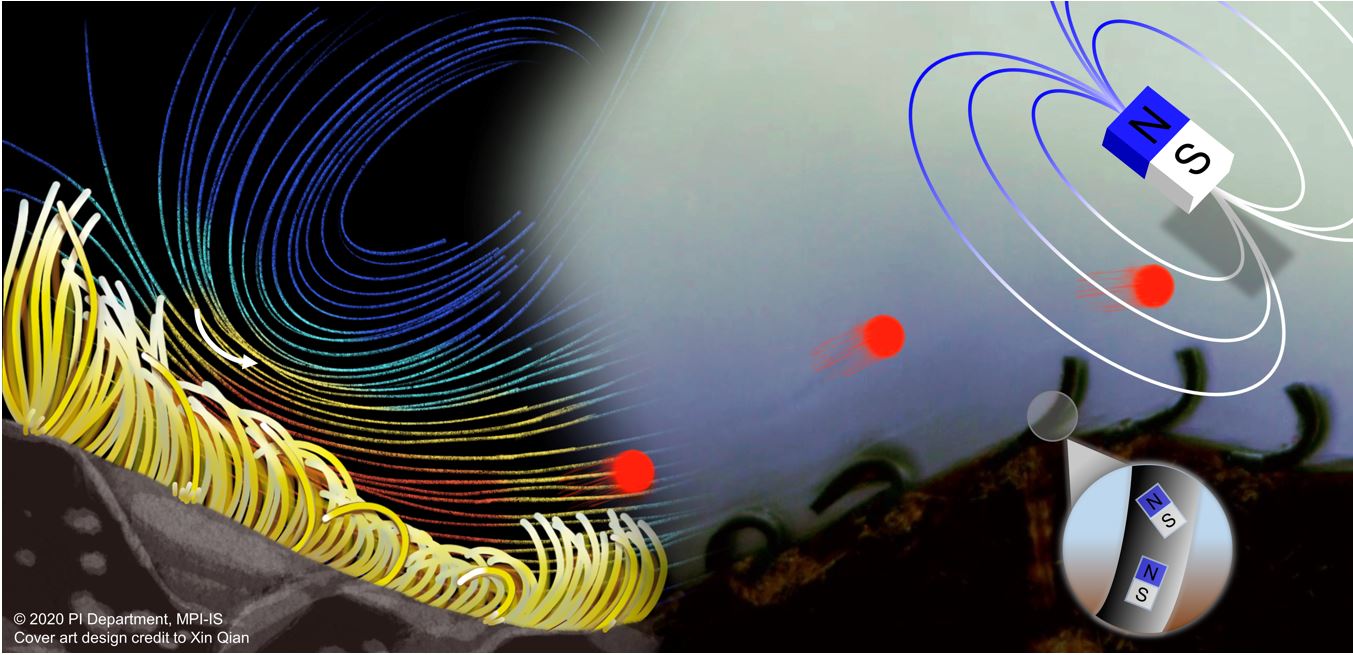
Inspired by biological cilia (left), a generic design method enables creating magnetically actuated cilia arrays (right) with optimally coordinated movement, which help study challenging scientific hypothesis and enable highly efficient fluidic devices with unprecedented capabilities of pumping and mixing viscous synthetic and biological fluids wirelessly.
Coordinated non-reciprocal dynamics in biological cilia is essential to many living systems, where the emergent metachronal waves have been hypothesized to enhance net fluid flows at low Reynolds numbers (Re). Experimental investigation of this hypothesis is critical but currently missing, as biological systems are not fully viable for extensive controlled experiments. One promising solution is to use small-scale soft devices with programmable motions as a bioinspired platform to model and study their biological counterparts by controlled experiments at larger length scales while keeping the essential nondimensional parameters (e.g., Re) the same. These bioinspired soft devices can also enable unprecedented microfluidic functionalities for lab-on-a-chip and medical applications. So far, many small-scale artificial cilia have been proposed for emulating motions produced by biological cilia arrays. However, at small-length scales, designing and controlling both the complex individual ciliary motion and the overall coordinated dynamics within collective artificial cilia arrays pose a grand scientific challenge.
Here we report a class of miniature soft devices with both programmable non-reciprocal motion and collective metachronal coordination, by designing and actuating sub-millimeter scale ferromagnetic-elastic sheet arrays inside viscous fluids [ ]. By intrinsically emulating biological ciliary dynamics using such magnetic cilia arrays, we found that only antiplectic metachronal waves with wave vectors in a specific range could enhance fluid flow compared with the synchronized case, revealing the quantitative relationship between metachronal coordination and the induced fluid flow. Such findings further enable various artificial cilia arrays as fluidic devices with unique functionalities at low Re, including a biomimetic cilia array capable of propagating optimal metachronal wave on curved surfaces (like coral reefs), a device for mixing viscous fluids rapidly and completely, and devices for pumping viscous (bio)fluids in narrow channels. Our design method and developed soft miniature devices provide new opportunities for studying ciliary biomechanics and creating cilia-inspired wireless microfluidic pumping, object manipulation and lab- and organ-on-a-chip devices, mobile microrobots, and bioengineering systems.
